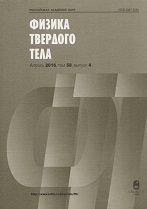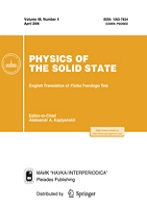|
This article is cited in 10 scientific papers (total in 10 papers)
Graphenes
The role of electron–electron repulsion in the problem of epitaxial graphene on a metal: Simple estimates
S. Yu. Davydovab
a Ioffe Institute, St. Petersburg
b St. Petersburg National Research University of Information Technologies, Mechanics and Optics
Abstract:
For single-layer graphene placed on a metal substrate, the influence of intra- and interatomic Coulomb repulsion of electrons ($U$ and $G$, respectively) on its phase diagram is considered in the framework of an extended Hartree–Fock theory. The general solution of the problem is presented, on the basis of which special cases allowing for analytical consideration are analyzed: free and epitaxial graphene with and without regard for the energy of the electron transition between neighboring atoms of graphene. Three regions of the phase diagram are considered: spin and charge density waves (SDW and CDW, respectively) and the semimetal (SM) state uniform in the spin and charge. The main attention is paid to undoped graphene. It is shown that the allowance for the interaction with a metal substrate expands the SM existence domain. However, in all the considered cases, the boundary between the SDW and CDW states is described by the equation $U = zG$, where $z$ = 3 is the number of nearest neighbors in graphene. The widening of the SM state region also results from the doping of graphene, and the effect is independent of the sign of free carriers introduced into epitaxial graphene by the substrate. According to estimates made, the only state possible in the buffer layer is the metal-type SM state, whereas, in epitaxial graphene, the CDW state is possible. The influence of temperature on the phase diagram of epitaxial graphene is discussed.
Received: 12.01.2017
Revised: 05.02.2017
Citation:
S. Yu. Davydov, “The role of electron–electron repulsion in the problem of epitaxial graphene on a metal: Simple estimates”, Fizika Tverdogo Tela, 59:8 (2017), 1650–1658; Phys. Solid State, 59:8 (2017), 1674–1682
Linking options:
https://www.mathnet.ru/eng/ftt9507 https://www.mathnet.ru/eng/ftt/v59/i8/p1650
|


| Statistics & downloads: |
| Abstract page: | 67 | | Full-text PDF : | 16 |
|





 Contact us:
Contact us: Terms of Use
Terms of Use
 Registration to the website
Registration to the website Logotypes
Logotypes









 Citation in format
Citation in format 
